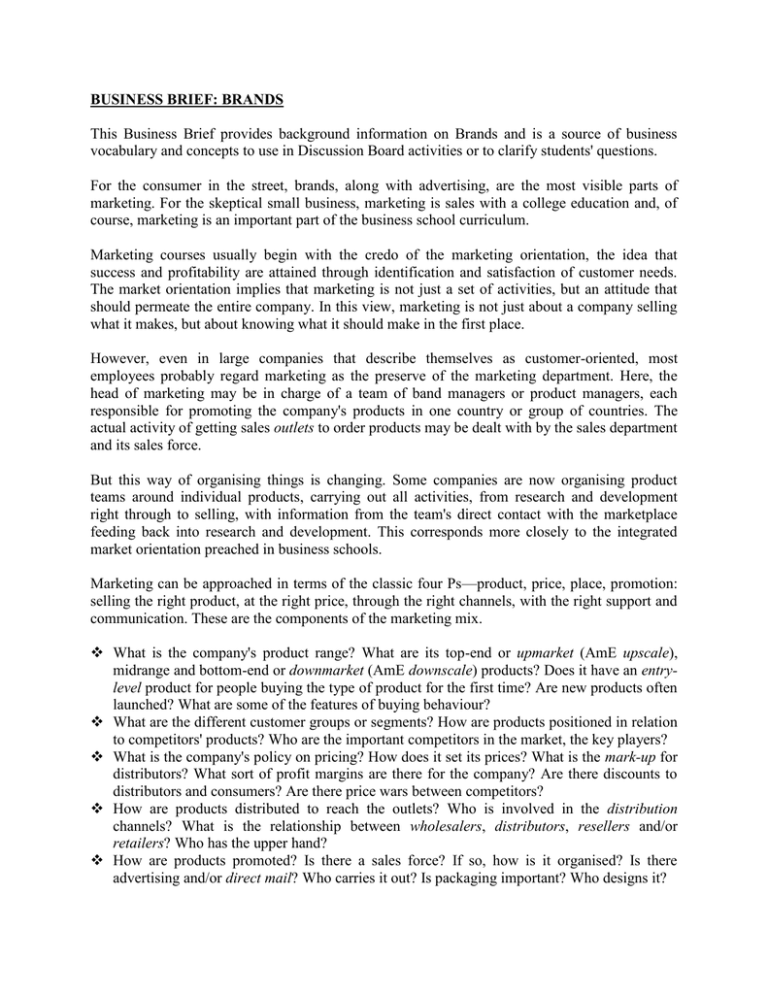BUSINESS BRIEF: BRANDS
advertisement

BUSINESS BRIEF: BRANDS This Business Brief provides background information on Brands and is a source of business vocabulary and concepts to use in Discussion Board activities or to clarify students' questions. For the consumer in the street, brands, along with advertising, are the most visible parts of marketing. For the skeptical small business, marketing is sales with a college education and, of course, marketing is an important part of the business school curriculum. Marketing courses usually begin with the credo of the marketing orientation, the idea that success and profitability are attained through identification and satisfaction of customer needs. The market orientation implies that marketing is not just a set of activities, but an attitude that should permeate the entire company. In this view, marketing is not just about a company selling what it makes, but about knowing what it should make in the first place. However, even in large companies that describe themselves as customer-oriented, most employees probably regard marketing as the preserve of the marketing department. Here, the head of marketing may be in charge of a team of band managers or product managers, each responsible for promoting the company's products in one country or group of countries. The actual activity of getting sales outlets to order products may be dealt with by the sales department and its sales force. But this way of organising things is changing. Some companies are now organising product teams around individual products, carrying out all activities, from research and development right through to selling, with information from the team's direct contact with the marketplace feeding back into research and development. This corresponds more closely to the integrated market orientation preached in business schools. Marketing can be approached in terms of the classic four Ps—product, price, place, promotion: selling the right product, at the right price, through the right channels, with the right support and communication. These are the components of the marketing mix. What is the company's product range? What are its top-end or upmarket (AmE upscale), midrange and bottom-end or downmarket (AmE downscale) products? Does it have an entrylevel product for people buying the type of product for the first time? Are new products often launched? What are some of the features of buying behaviour? What are the different customer groups or segments? How are products positioned in relation to competitors' products? Who are the important competitors in the market, the key players? What is the company's policy on pricing? How does it set its prices? What is the mark-up for distributors? What sort of profit margins are there for the company? Are there discounts to distributors and consumers? Are there price wars between competitors? How are products distributed to reach the outlets? Who is involved in the distribution channels? What is the relationship between wholesalers, distributors, resellers and/or retailers? Who has the upper hand? How are products promoted? Is there a sales force? If so, how is it organised? Is there advertising and/or direct mail? Who carries it out? Is packaging important? Who designs it? These questions relate mainly to consumer marketing. They obviously need to be adapted for other companies, products, and services. Bear in mind that most business takes place between companies; marketing in this context is industrial or business-to-business marketing.











